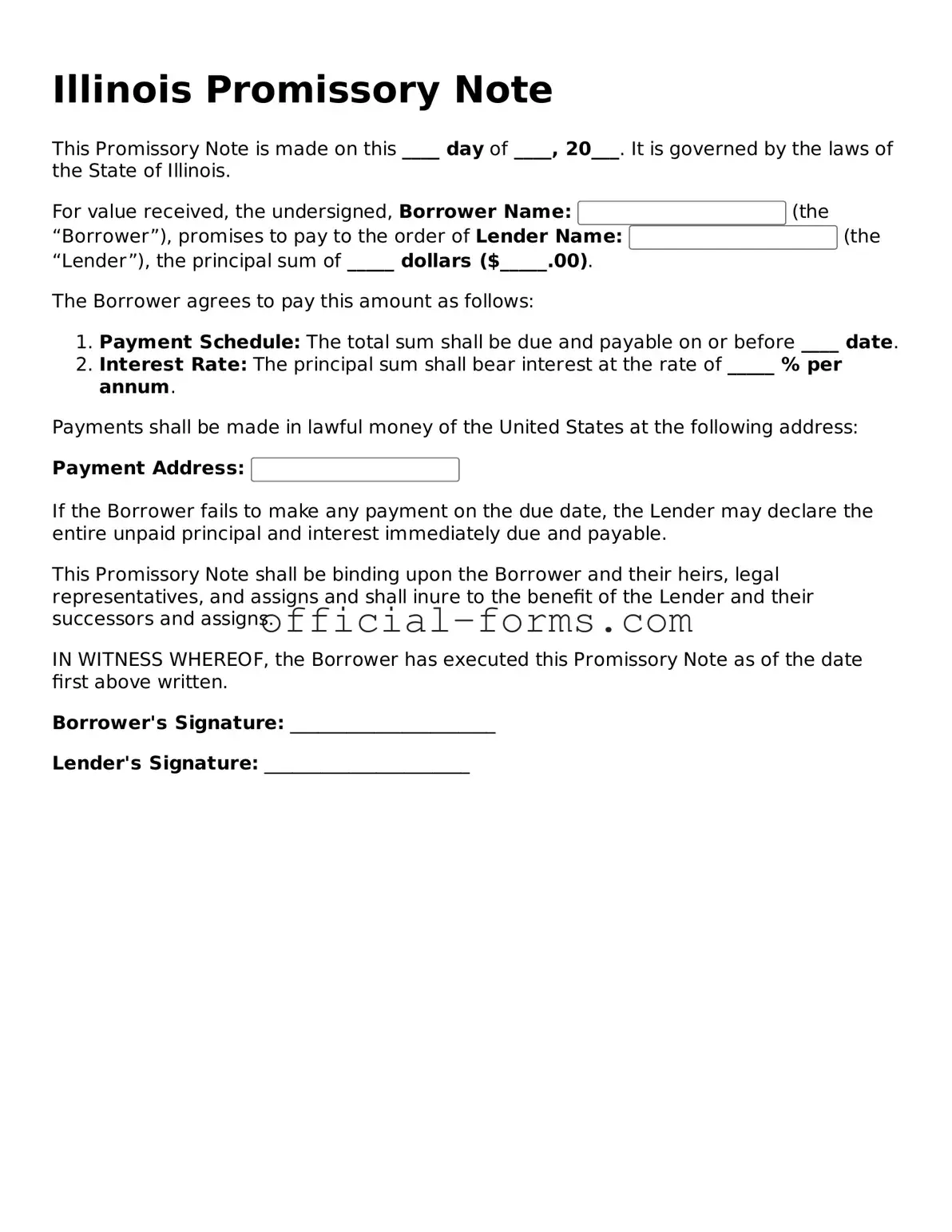Filling out the Illinois Promissory Note form requires careful attention to detail. One common mistake is failing to include all necessary information. The form requires specific details such as the names of the borrower and lender, the amount borrowed, and the repayment terms. Omitting any of this information can lead to confusion or disputes later on.
Another frequent error is not clearly stating the interest rate. If an interest rate is applicable, it should be clearly defined. Vague language or missing information about the interest can create misunderstandings about the total amount to be repaid.
Some individuals overlook the importance of signatures. Both the borrower and lender must sign the document for it to be legally binding. Failing to obtain the necessary signatures renders the note ineffective, which can complicate any future collection efforts.
Inaccurate dates are also a common issue. It is crucial to ensure that the date of the agreement is correct. An incorrect date can affect the enforceability of the note and may lead to complications in tracking repayment timelines.
Another mistake involves not specifying the repayment schedule. Whether payments are to be made monthly, quarterly, or in a lump sum, this should be clearly outlined. Without a defined schedule, it may be difficult to determine when payments are due.
People sometimes neglect to include provisions for default. It is advisable to outline what happens if the borrower fails to make a payment. This can include late fees or legal actions, and having these terms in writing can help protect the lender’s interests.
Finally, individuals may not keep copies of the completed Promissory Note. Both parties should retain a signed copy for their records. This ensures that both the borrower and lender have access to the same information, which can be essential in case of disputes.
